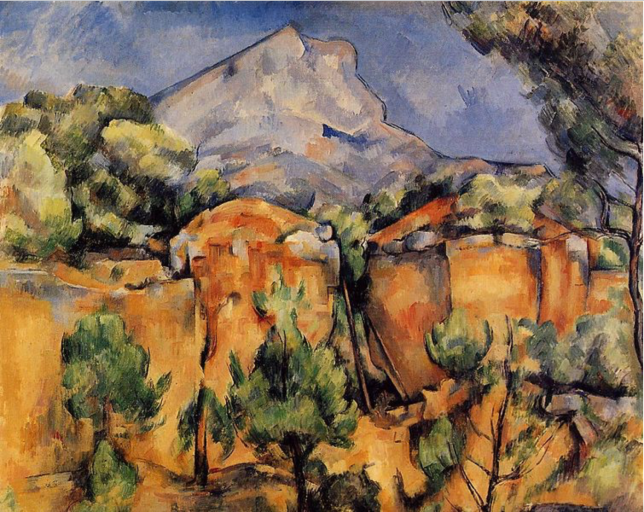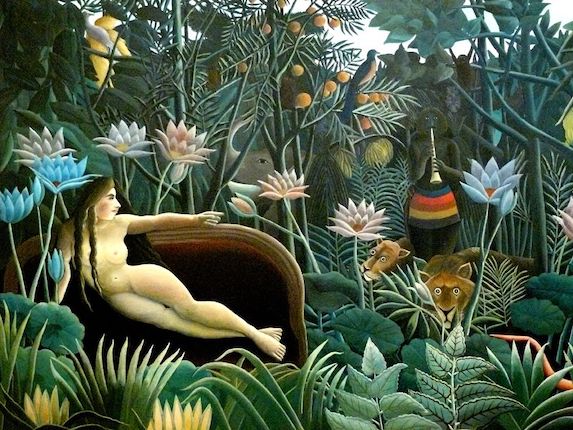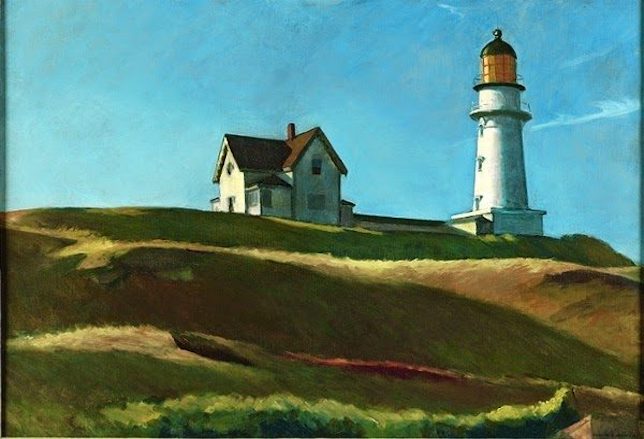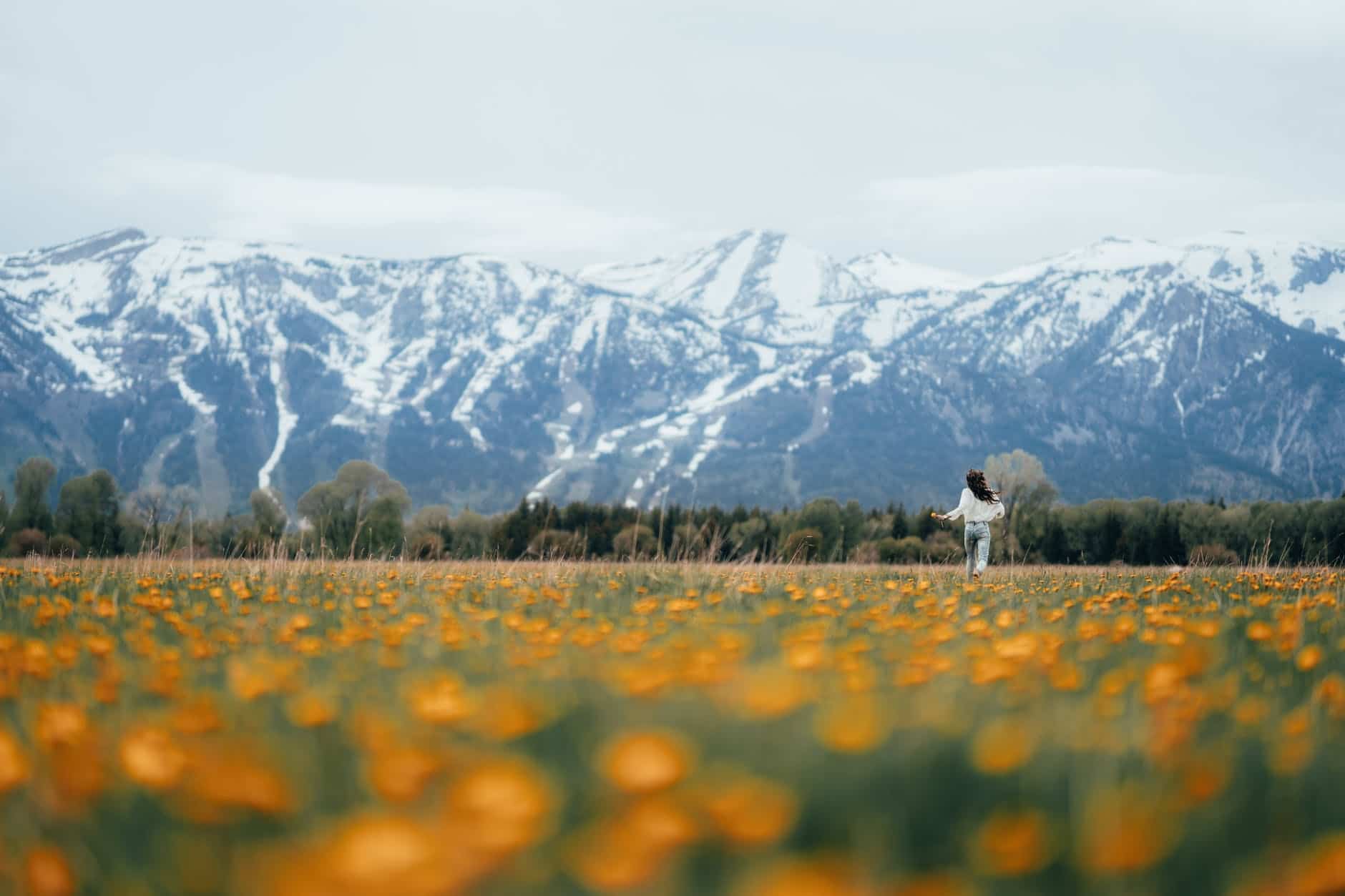
10 Famous Landscape Paintings You Should Know

Landscape painting was a genre that had long-sought-after formal recognition. It was not until the 17th century that the theme became a pictorial genre in its own right, alongside historical painting, portraiture, and still life. In the 19th century, landscapes underwent significant development, with the birth of the Barbizon School in 1830. From then on, open-air painting became more democratic, and nature appeared to be the most inspiring of subjects. Green forests, rocky cliffs, and plowed fields become the scenes of predictions of certain painters. These canvases are among the greatest paintings in the history of art. Artsper has selected 10 famous landscape paintings you should know… a change of scenery guaranteed!
1. Nicolas Poussin: Scholarly Landscape

The classical painter Nicolas Poussin (1594-1665) produced a deeply erudite and profound painting, fundamental in the history of art. He is notably the inventor of the “ideal landscape” where man is intimately linked to nature, portrayed in a majestic and grandiose way. Inviting to delight, it offers an in-depth reflection on the place of the son of Adam within the divine immensity.
Between 1660 and 1664, he produced the Cycle of 4 Seasons. Painted at the end of his life for the Duke of Richelieu, the series presents sketches from the Old Testament, in which the landscape takes a dominant place. It was with Spring that he began to complete the order. Here, the artist depicts Adam and Eve naked. They are in the middle of a meadow dotted with trees, including the famous apple tree described in Genesis. But if warm colors and a pleasant light emerge from the work, it is indeed a dramatic outcome that is suggested by the painter. The imminent original sin is notably underlined by the presence of God at the top right, fleeing the scene to prepare the punishment.
Scenes with multiple readings
In all of the paintings of the Four Seasons, Nicolas Poussin allows two interpretations of the scenes. In the first, called linear and Christian, God appears as the point of connection of all things. Life is understood as an accumulation of events predicted and organized by Christ, who has the power to punish or bless us according to our behavior. In the cyclical and natural reading, inherited from antiquity, actions are repeated at each new start of the cycle. However, some elements are also recomposed and regenerated: the eternal return of certain events becomes inevitable.
2. Giovanni Antonio Canal (aka Canaletto): Urban Landscape

The Grand Canal at the Church of La Salute, painted by the Venetian artist Canaletto (1697-1760) is a special type of landscape painting. It is exactly a Veduta (“view” in Italian), which is characterized by the exact representation of a landscape, often urban. Because they are faithful to the perception of reality, the Veduta were made at the time using several instruments, including the camera obscura, ancestor of the camera.
If the painting of the Italian master wants to be meticulous in the representation of topography, the landscape represented is no less poetic. The light, almost transparent, envelops the city in a soft and warm atmosphere and sets the scene in the late afternoon. In addition to being a landscape painting, Canaletto’s work depicts the life of the people of Venice. The famous gondoliers are represented near the Grand Canal, as well as merchants and diplomats from the Orient.
3. Caspar David Friedrich: Spiritual Landscape

What time of day would you place this scene? Perhaps in the morning, as evidenced by this enveloping white mist. Or would it be in the evening, as this fading light would suggest in the distance? The presence of the Capuchin monk walking on this seaside gives us no answer. The only thing certain: he seems thoughtful in the face of the immensity of the surrounding landscape.
Caspar David Friedrich (1774-1840) fits perfectly into the German Romanticism that began in 1770. The canvas is a remarkable illustration of the painter’s concerns throughout his career. Indeed, his scenes, inspired by allegory and philosophy, invite the character of his work to contemplation. In the same way that the spectator himself is called to contemplate this vast enigmatic expanse. Almost everything here is reduced to a minimum. The line, the color, the human presence, appears as a simple “detail” in the composition. With this work, Friedrich seems to send us a message: man is not much in the face of this unpredictable, sometimes cruel nature. Thus the Monk by the Sea invites us to reflect, but above all, to let our mind wander.
4. Eugène Boudin: Seascape

Born in Honfleur, Eugène Boudin (1824-1898) draws most of his inspiration from the sky and the sea of Normandy. An admirer of nature and a great lover of seascapes, Boudin wants to get away from it all. Born in a century where academic art dominates, the painter nevertheless embarks on another path: that of open-air painting.
Boudin has the firm will to translate the fleeting impressions of the landscape and the evanescence of light – which undoubtedly makes him the precursor of Impressionism. Observer and patient, he is attentive to atmospheric phenomena and tries to capture the immensity of the sky and the Normandy coasts. Modern, he represents the new bourgeoisie of his century, whose beautiful dresses and elegant hats he painted with shimmering colors. Self-taught, Boudin applies his rapid technique, more suggestive than descriptive, to his various favorite subjects: seashores and ports.
In his landscapes, the painter always gives pride of place to the sky and its variations. His “meteorological beauties” then come in all forms: sketches, pastels, watercolors, oil paintings… But always with poetic touches, his painting so dear to the world!
5. Vincent Van Gogh: Tormented Landscape

Without a doubt, this work is the best known of the famous landscape paintings! The creator Vincent van Gogh moved to Arles in 1888. A real spiritual quest then began for the painter, who tried to fight his demons. Although it represents a soft starry night conducive to reverie, some of the plastic elements of this landscape illustrate its pathology well: sharp features, hellish spirals, and contrasting colors.
A study of the artist’s archives has shown that while the different stars are inspired by very real nebulae (the Venus nebula was particularly bright in 1889), the village is fictitious. The dazzling, aspirating light of the moon does nothing to illuminate the dark night that falls on this village in Provence. The intense, thick black branches of the cypress add an eerie touch to the general atmosphere. Many yellow stars contrast with the different blues of the night and make the scene both grandiose and terrifying. The painter’s attention is particularly focused on this central arabesque. Perhaps this transcribes the height of his psychological torment? It may also be a sign of his admiration for Japanese art and prints, which we find in the 19th century many spirals and solid colors.
6. Paul Cézanne: Obsessive Landscape

While in Provence-Alpes-Côte d’Azur, painter Paul Cézanne gradually decided to retire. Sun, cicadas, fruit trees… but above all, the Sainte-Victoire mountain were major sources of inspiration for the artist. This mountain range inspires the painter for no less than eighty of his paintings. An obsession did you say?
As an outdoor painter, he appreciates landscapes with a thousand colors and scents. Unlike the Impressionists, Cézanne does not dissolve the colors between them, but firmly presses the outlines which he often emphasizes with black to create distinct volumes. The light is laid in impasto, like the ocher yellow of the stones and the vivid green of the pines, contrasting with the blue of the sky.
He does not faithfully paint reality as he sees it but wishes to create his own universe, where the slightly geometric shapes of the landscape portend the Cubist movement. If women were generally considered the muses of artists, for Cézanne it was without a doubt the Sainte-Victoire mountain that fascinated him the most. He writes: “For a long time I remained without power, without knowing how to paint Sainte-Victoire (…). Instead of settling, it evaporates, becomes fluid. It participates all bluish in the ambient breathing of air”.
7. André Derain: Colorful Landscape

Much like Sainte-Victoire, L’Estaque is also a famous source of inspiration for artists, especially for the famous fauvist painter, André Derain. L’Estaque became a symbolic site for the artists of this movement. They were inspired by the shimmering, vivid colors of Southern France. Here, the painter rests, alongside Georges Braque, Henri Matisse, and Raoul Duffy, also inspired by the particular luminosity of this geographical area.
Rejecting naturalism, André Derain offers a new reality where color takes precedence over drawing. His chromatic research led him to paint works dotted with red, yellow, orange, and sometimes blue, hues. Using both hot and cold colors, the composition is expertly balanced. The depiction represents a village scene, made up of trees, houses, and various small figures. The painter carefully made the image easier to read by emphasizing the outlines of the various elements of the composition.
8. Douanier Rousseau: Dreamy Landscape

At the very end of the 19th century, Henri Rousseau was one of the dominant figures of the Naive movement (1885-1930). Characterized by a voluntary ignorance of the perspective and the reality of the dimensions, the current evokes a childish and very graphic universe.
In this painting, Douanier Rousseau takes us to the heart of a lush jungle, where various animal species (lions, elephants, birds) hide. Central of the vegetation, a woman sits in the foreground listening to the melody played by a flute charmer. This is Yadwiga, Rousseau’s friend who he had met in Poland. His pose suggests one of the classic representations of nudes in art history, which we find, for example, in Edouard Manet’s Olympia. Her pose is enigmatic and erotic, making her a symbol of desire. During his work on psychoanalysis, Freud interpreted this landscape painting as an allegory of the painter’s repressed desires.
The artist’s numerous visits to the Jardin d’Acclimatation and the Natural History Museum in Paris undoubtedly inspired the latter, who is known to be an admirer and great connoisseur of vegetation. Many variations of green – no less than 20 – contrast with the vivid colors of the giant lotuses surrounding Yadwiga. The harmony of colors makes this decor a harmonious and dreamlike landscape, inviting to travel.
9. Edward Hopper: Lonely Landscape

The works painted by Edward Hopper (1882-1967) have a captivating side, undoubtedly linked to their mystery. This 1927 landscape, in particular, gives rise to contradictory interpretations. Attached to the landscapes of America’s Atlantic coast, and more particularly to those of New England, Hopper depicts a scene in which appears a winding valley, a house, and a lighthouse.
While the painting is bathed in a reassuring light, a feeling of anguish is inevitable in the face of this abandoned, nearly deserted scene. The line between civilization and nature is difficult to establish. Behind this postcard setting, there seems to be a sort of hidden face, conducive to anxiety, and boredom. The artist is known for his fascination with the vertical architecture of lighthouses. Real landmarks in the landscape, lighthouses are also references to loneliness and storms. The absence of the sea locks the scene even further into a bubble, almost giving a sense of claustrophobia!
It is a habit for Hopper to choose countryside landscapes, although his best-known works feature thinking figures in bars in glamorous America.
10. Nicolas de Staël: Abstract Landscape

The painter Nicolas de Staël (1914-1955) appropriated landscape painting in a very different way from the artists studied until then. His geometric compositions, thick impasto, and range of bright colors make his work an eminently abstract creation. Later in his career, the painter offers a painting that reconnects a little more with reality, and as a result, deeply questions the opposition between abstraction and figuration. A meticulous painter, he gave birth to some of his greatest landscape paintings after careful studies in pencil and ink.
Granting himself a lot of freedom when it comes to the representation of reality, he produced several works highlighting the landscapes of Sicily, with which he fell in love during his trip to Italy in 1953. He never offered a landscape painting identical to that of the previous one. Light, like the material or the shapes chosen, are systematically different.
Through brightly colored areas, Staël attempts to fix on the canvas the essence of the landscape he represents, through the use of pure lines and strident colors. Purple and green try to find their balance with ocher tones and red. The horizon line allows a very clear distinction between sky and earth. Such colors may surprise when you know that her trip to Sicily takes place in the middle of August, at a time when the landscapes are arid, dry, scorched by the heat of the sun. But the arbitrariness of the colors in this painter refers directly to his desire to transcribe the sensation received.
What will be your favourite landscape?
This study of ten famous landscape paintings allows us to discover or rediscover places that artists cherish. From the green hills of the south to the seaside of the Normandy coast, landscapes can inspire painters differently. If the representation of what is seen is more or less faithful to reality, the creators had one thing in common: to convey an impression to the viewer. Serenity, anguish, spirituality… the feelings that nature lavish upon us.

About Artsper
Founded in 2013, Artsper is an online marketplace for contemporary art. Partnering with 1,800 professional art galleries around the world, it makes discovering and acquiring art accessible to all.
Learn more













